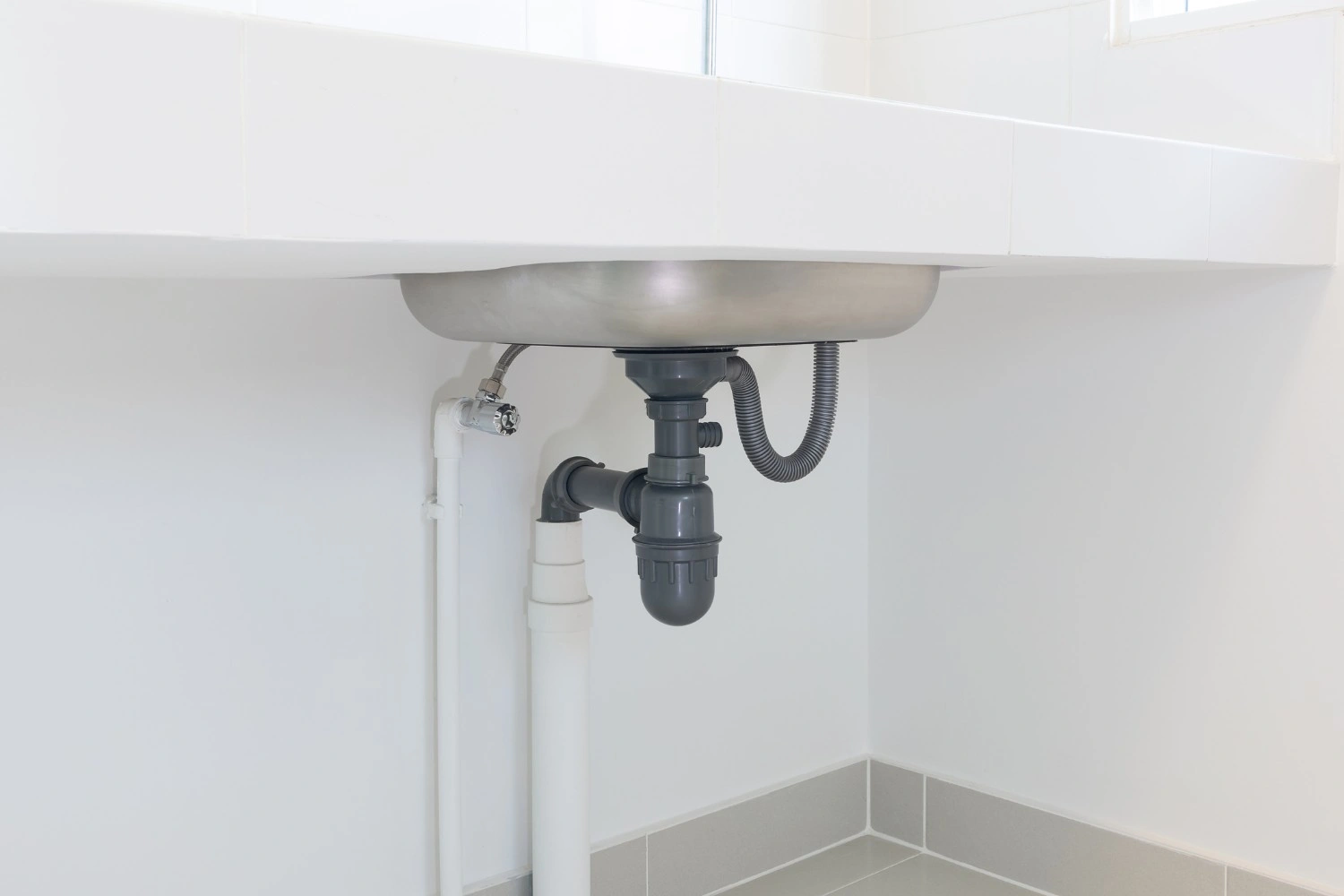A kitchen is the heart of a home, and a properly functioning garbage disposal is key to its efficiency and hygiene. More than just a convenience, a well-installed garbage disposal unit contributes to cleaner dishes, fresher sinks, and a more streamlined kitchen routine. While the idea of a DIY installation might seem appealing, the complexities involved in electrical wiring, plumbing connections, and ensuring a leak-proof seal often require the expertise of trained professionals. Choosing a professional service for your garbage disposal installation guarantees safety, efficiency, and long-term reliability.
At Limelight Services, we understand the critical role a garbage disposal plays in modern kitchens. Our comprehensive installation service is designed to remove the guesswork and potential hazards associated with setting up a new unit, ensuring your kitchen upgrade is seamless and stress-free.

The Professional Installation Process: What to Expect
Installing a garbage disposal is a multi-faceted task that combines electrical and plumbing work. Our professional approach ensures every step is handled with precision:
- Initial Assessment and Preparation: Before any work begins, our technicians assess your existing setup. This includes examining your sink drain, plumbing configuration, and electrical access under the sink. If you're replacing an old unit, we safely disconnect and remove it, meticulously cleaning the area to ensure a fresh start. This preparatory stage is crucial for identifying any potential challenges and gathering the correct tools and materials specific to your kitchen’s needs.
- Mounting the New Unit: The new garbage disposal unit is securely attached to the sink flange. This involves positioning the mounting assembly correctly, tightening it firmly, and applying plumber's putty to create a watertight seal between the sink and the disposal unit. Precision here is paramount to prevent future leaks.
- Plumbing Connections: The disposal unit is connected to the sink's drain pipe and, if applicable, to the dishwasher discharge hose. This requires proper alignment and sealing of all pipes to ensure efficient drainage and prevent backflow or leaks. Our experts ensure all connections comply with local plumbing codes.
- Electrical Wiring: This is arguably the most critical step, requiring careful attention to safety. The disposal unit’s power cord is connected to a dedicated electrical outlet, or hardwired directly into the electrical system, depending on the unit and existing wiring. Our technicians ensure all electrical connections are secure, grounded, and insulated to prevent electrical hazards.
- Testing and Verification: Once installed, the unit undergoes rigorous testing. We run water through the disposal, activate it, and meticulously check for any leaks, unusual noises, or operational issues. We also ensure that the dishwasher drains properly into the disposal (if connected) and that all functions are working as intended before completing the job.
Choosing the Right Garbage Disposal Model
Selecting the appropriate garbage disposal is essential for meeting your household's specific needs. Factors to consider include:
- Horsepower (HP): Disposals typically range from 1/3 HP to 1 HP. Smaller units (1/3 or 1/2 HP) are suitable for light use, while larger units (3/4 or 1 HP) are recommended for households with heavy usage or those frequently disposing of fibrous waste. Higher HP units generally offer more grinding power and less chance of jamming.
- Grinding Stages: Basic disposals have one grinding stage, while more advanced models offer multiple stages for finer grinding, which can be beneficial for challenging food waste.
- Continuous Feed vs. Batch Feed: Continuous feed disposals operate as long as the switch is on and water is running. Batch feed disposals only operate when the drain cover is in place, offering an added layer of safety, especially in homes with small children.
- Noise Level: Modern disposals come with varying degrees of sound insulation. If quiet operation is a priority, look for models specifically designed for reduced noise.
- Compatibility: Ensure the chosen model is compatible with your sink material, drain size, and existing plumbing. Our team can guide you through these choices, recommending models that best fit your lifestyle and kitchen setup.
Proactive Troubleshooting and Maintenance Tips
A professionally installed garbage disposal is less likely to encounter common issues, but proper maintenance is key to its longevity. Here are some tips to keep your unit running smoothly:
- Always Use Cold Water: Run cold water before, during, and for at least 30 seconds after using the disposal. Cold water helps to solidify fats and oils, allowing them to be ground up and flushed away rather than coating the pipes.
- Avoid Problematic Items: Do not put fibrous materials (celery stalks, corn husks), starchy items (pasta, rice), large bones, fruit pits, coffee grounds, grease, or expandable foods into the disposal. These can cause clogs or damage the motor.
- Regular Cleaning: To combat odors and clean the grinding chamber, periodically grind ice cubes with a handful of citrus peels (lemon, lime, orange). The ice helps to dislodge food particles, and the citrus leaves a fresh scent.
- Address Jams Promptly: If the disposal hums but doesn't grind, it's likely jammed. Turn off the power immediately. Use an Allen wrench (usually provided with the disposal) in the bottom center hole to manually turn the motor. Once clear, press the red reset button, typically located on the bottom of the unit, before restoring power.
When to Consider an Upgrade
Even with meticulous care, garbage disposals have a lifespan. Signs it might be time for an upgrade include:
- Frequent Jams or Clogs: If your disposal is constantly jamming or failing to clear waste, it may be losing its grinding power.
- Persistent Leaks: Leaks from the unit's housing, seals, or connections, especially after professional repairs, often indicate internal wear.
- Unusual Noises: Grinding sounds, rattling, or loud hums can signal motor issues or loose components.
- Loss of Power: If the unit frequently trips its circuit breaker or fails to turn on, it could be an electrical or motor problem.
- Foul Odors: Persistent unpleasant smells, even after cleaning, might indicate residual food accumulation in worn components that are no longer grinding effectively.
Upgrading to a newer, more efficient model can offer significant benefits, including quieter operation, enhanced grinding power, and improved energy efficiency. Our team can help assess your current unit and advise on the best replacement options.
Environmental Considerations with Garbage Disposals
While proper usage is important, a garbage disposal can also play a role in sustainable waste management. By grinding food waste into small particles that are then flushed into the wastewater system, it diverts organic materials from landfills. This can reduce methane gas emissions that contribute to climate change. Modern disposals are increasingly designed with energy efficiency in mind, further enhancing their environmental profile when used responsibly.
Contact Us for Disposal Installation!
A professional garbage disposal installation is an investment in your kitchen's functionality, cleanliness, and the overall convenience of your home. It mitigates the risks associated with improper electrical and plumbing work, prevents future maintenance headaches, and ensures your unit operates at peak performance for years to come. By choosing Limelight Services, you’re opting for meticulous attention to detail, adherence to safety standards, and expert guidance every step of the way, from model selection to post-installation care.
Ready to enhance your kitchen with a reliable and efficient garbage disposal? Trust the professionals to deliver a flawless installation. Give us a call today!

















